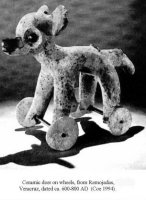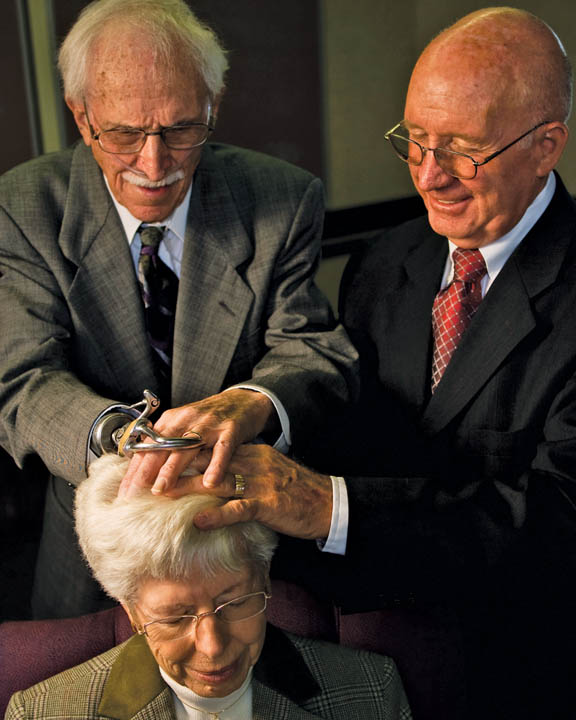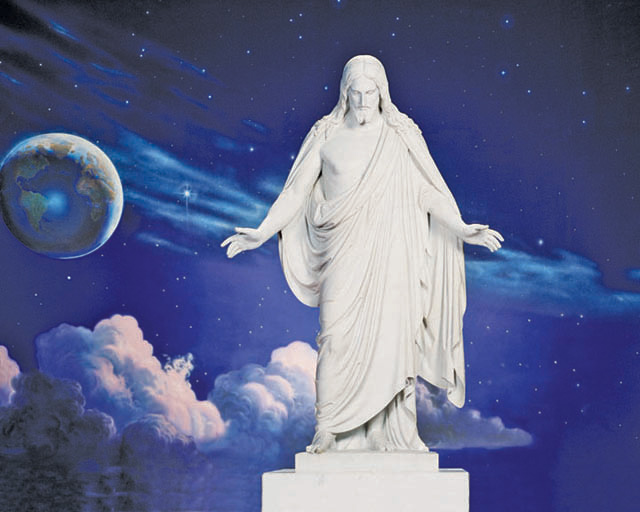A personal response from Terrie.
There are a small number of mentions in the Book of Mormon of horses. There does not appear to be archeological proof for their existence in the New World during the time period in which they are mentioned (600 B.C. to 400 A.D.).
Science is not religion. Mormons generally leave science to the scientists to figure out and focus instead on faith. It is important to note that Mormons are not particularly interested in the lack of horse bones for that time period, any more than they are worried about the lack of archaeological evidence for many things mentioned in the Bible, such as lions. They don’t believe the Bible because of physical proof, nor do they disbelieve it due to lack of physical proof. They treat the Book of Mormon in the same way.
Although it’s not a factor in their faith, some Mormons do find the subject interesting as an intellectual puzzle. FAIR, an LDS apologetics organization, has addressed the issue in the past. Apologetics does not mean one is apologizing, but rather explaining to the curious.

Mayan Deer used as a Beast of Burden
Michael R. Ash delivered a PowerPoint presentation on the subject of horses and chariots at the Book of Mormon Lands Conference, 20 October 2007. He points out that horses are mentioned only a few times, suggesting they were not common creatures. They were not mentioned as being used in the same ways horses were used in Joseph Smith’s own time, or even as they were used in the Bible. Several of the mentions were quotes from Isaiah, and therefore not appropriate to use as evidence against the Book of Mormon, and some were quotes from Jesus Christ, and also not appropriate as evidence.

A Tapir
Ash suggests several possibilities for the mention of horses. One is that the “horses” may not have been horses as we know them. The Book of Mormon was written in a language referred to as reformed Egyptian. Writers explained that they wished to have used Hebrew, because the book would then contain fewer errors. However, reformed Egyptian was more compact and took less room on the plates. Being more compact, it is also likely that it used a smaller vocabulary. The Book of Mormon has a relatively small vocabulary compared to other books the same length, and even smaller than that used by Joseph Smith in other writings. Languages often combine words, so that one word has multiple meanings (“read a book,” “book a flight”). The smaller the language’s vocabulary, the more words are combined. In addition, words that are less necessary are less likely to receive their own word.
If this is the case, Ash suggests the people of the Book of Mormon, encountering horses, may have used a combined term. For instance, when the Aztecs first saw horses, they had no word for the animal, so they called them deer. They continued to use that word to refer to actual deer as well, but now the word deer referred to two different animals. The word horses might have been used for a number of different animals, including tapirs.

An Ancient American wheeled toy
Another scholar pointed out several possibilities for mentions of horses. Ted Dee Stoddard, in The Issue of the word Horse in the Book of Mormon, reminds us that horses existed at one time in the ancient world, but were believed to have become extinct. Any casual student of archaeology knows scientists frequently find animals alive that were previously believed to be extinct. Therefore, there may have been small numbers that survived, and the evidence simply hasn’t been found yet. This view is held by some scientists, and there is some limited evidence for this possibility.
Another view is that the horses were really a different animal, possibly deer. There are drawings from ancient Guatamala of people riding deer. The Nephites may have used the term horse simply because the deer were used as they might once have used horses.
Stoddard also suggests the word horses may be a translation issue. Those who have translated know there are not always direct translations for any given word, and that a single word may have multiple meanings. Joseph Smith translated as a man of his own time and experience, and, seeing a word with an uncertain meaning, would have selected one that fit his perceptions. If someone was using an animal in a way horses are used, he would see it as a horse. The language he translated was a symbol-based language and thus, Joseph was turning symbols into words. It is not eternally significant that we know what animal was being used. Where the information is eternally significant, it becomes much more important for Joseph to be certain he is precise in his translation, but no one’s salvation depends on knowing which animals are in the Book of Mormon.
Stoddard suggests there were probably not horses as we know them today in the Book of Mormon times, but then again, he points, out, citing Jeff Lindsay, there were also not dragons and unicorns in the Holy Lands, even though the Bible says there were. It is difficult for translators to efficiently describe unfamiliar animals, and so an early writer or a later translator is likely to use terminology he understands or believes his readers will understand.
These two articles provide more in-depth information about this topic for those who are curious about them. Once again, however, it’s important to note that those who believe in the Bible don’t scoff at it for mentioning dragons, unicorns, or lions despite the lack of evidence to prove it, and Mormons don’t discount the Bible due to a lack of evidence for modern day horses.
Faith comes not from scientific evidence or historians, but from God. A Mormon makes his decision about both the Bible and the Book of Mormon by praying to God and receiving an answer as to its authenticity. Millions have put to the test this promise from Moroni in the Book of Mormon:
“And when ye shall receive these things, I would exhort you that ye would ask God, the Eternal Father, in the name of Christ, if these things are not true; and if ye shall ask with a sincere heart, with real intent, having faith in Christ, he will manifest the truth of it unto you, by the power of the Holy Ghost” (Moroni 10:4).
God is the only source of truth for a believing Christian. The teachings of men are changeable and uncertain. Science regularly changes its mind, and non-believing scientists sometimes toss out evidence that doesn’t support what they think they know or want to believe. Current scientific ideas and religion frequently disagree on religious matters, from creation to the very existence of God.
For the converted, however, there is no debate, no room for doubt. An answer from God is the only “proof” a Mormon needs to know the Bible and the Book of Mormon are the word of God. Everything else is just interesting.





Hi there. I’m intrigued by your statements “Faith comes not from scientific evidence or historians, but from God” and “An answer from God is the only “proof” a Mormon needs to know the Bible and the Book of Mormon are the word of God”. Can you please describe a method you use for getting information from God? Thanks.
When a person approaches God in sincere prayer with real intent, God will manifest the truthfulness of the scriptures to him. “Real intent” means you are willing to act upon the enlightenment you receive, which could take making big changes in your life.
To approach God in prayer, we address Him with reverence, thank Him for His graciousness, admit our failings, and offer to change our lives to know if the scriptures are true.